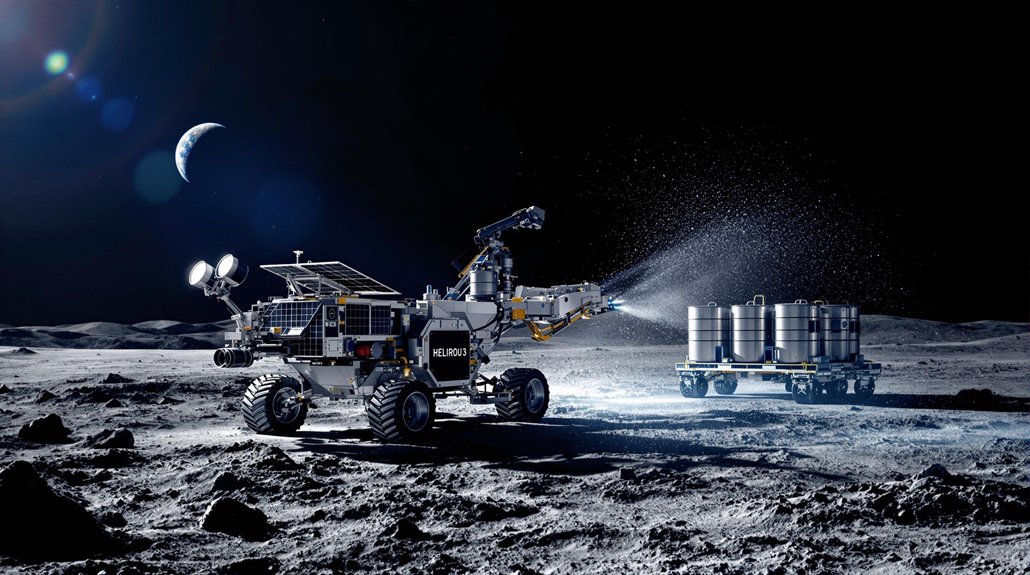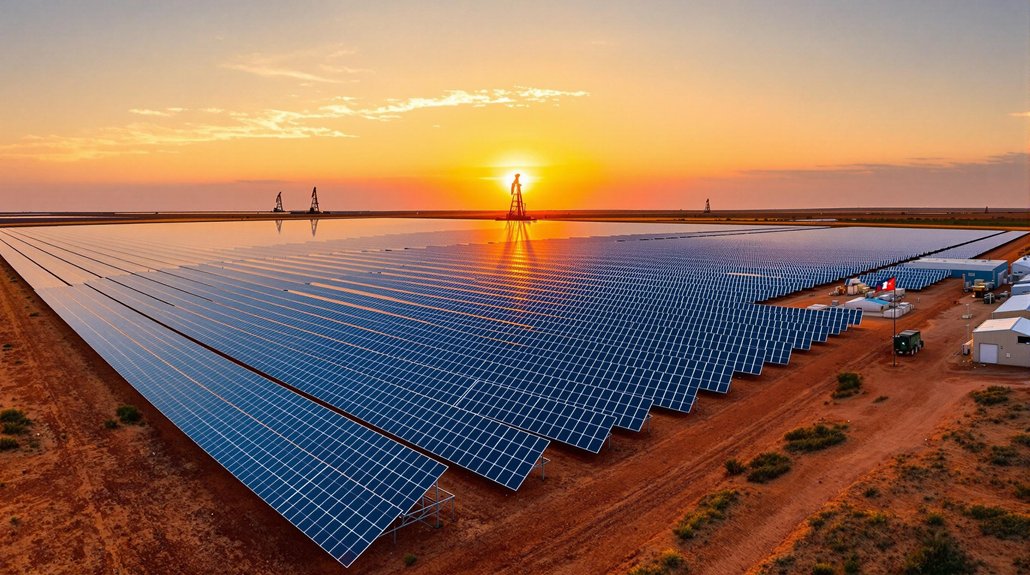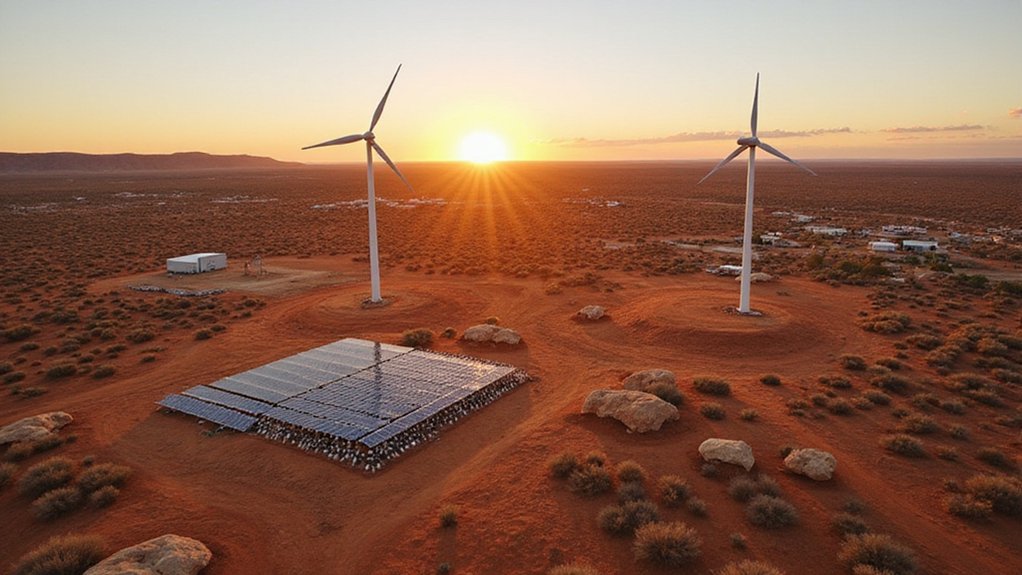Cochise County is going all-in on solar for cold, hard cash—not tree-hugging ideals. Projects like Apache Solar II (294 MW) and Dahlia ($120 million investment) prove it’s about dollars, not environmentalism. The Three Sisters project alone will create 250 jobs and generate $34.1 million in tax revenue. Local utilities see the profit potential too. Previously non-irrigated land gets new purpose. Smart economic move? The numbers certainly paint a compelling picture.
Cochise County is going all in on solar energy. Not because they’re tree-huggers. Not because they’re climate warriors. Because it’s making them rich. Simple math.
The numbers don’t lie. Apache Solar II will generate 294 megawatts and include a massive 940 MWh battery storage system—enough juice to power 54,000 homes. That’s not environmental activism; that’s economic common sense.
Solar isn’t just green—it’s greenbacks. 294 megawatts powering 54,000 homes means dollars, not dreams.
The McNeal Solar Farm, already up and running since October 2023, is smaller but still packs a punch with 20 MW of solar capacity and 80 MWh of battery storage. Arizona’s position as the sunniest state in America makes solar investment particularly lucrative in the region.
Money talks. The Dahlia Solar project represents a $120 million investment in the county. Three Sisters will create 250 construction jobs and generate $34.1 million in tax revenue over its lifespan. Who says going green can’t make you some green?
These aren’t just random solar panels scattered in fields. They’re strategic economic engines. The Winchester Solar project, set to come online in 2027, will deliver 80 MW of solar power backed by 320 MWh of battery storage.
The Three Sisters project will sprawl across 2,300 acres south of Willcox. Big projects. Big money.
Local utility companies aren’t sitting on the sidelines. Arizona Electric Power Cooperative, Sulphur Springs Valley Electric Co-operative, and Tucson Electric Power have all jumped into partnerships. They know which way the wind blows. Or rather, how bright the sun shines.
Land use? Most projects utilize previously non-irrigated land—dirt that wasn’t doing much anyway. The Apache Solar II project is smartly located at the existing Apache Power Generating Station. Efficient.
Battery storage is the secret sauce in these deals. It solves the “sun doesn’t always shine” problem. Apache Solar II’s 940 MWh system guarantees power flows during peak demand, even after sunset. Smart business.
Homeowners joining this solar revolution could receive a 30% tax credit on their own installations, further boosting the county’s economic prospects.
For Cochise County, this solar boom isn’t about saving polar bears. It’s about saving their economic future. The project specifically aims to serve disadvantaged communities in Arizona, making reliable energy accessible where it’s needed most. Pure dollars and sense.








